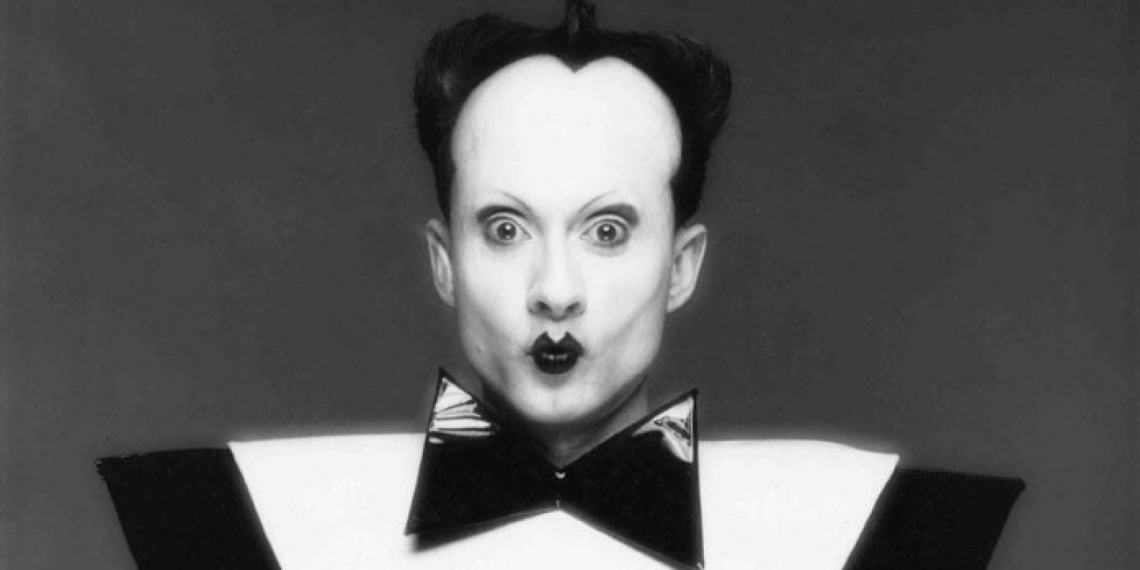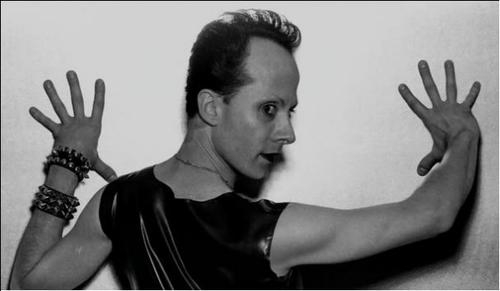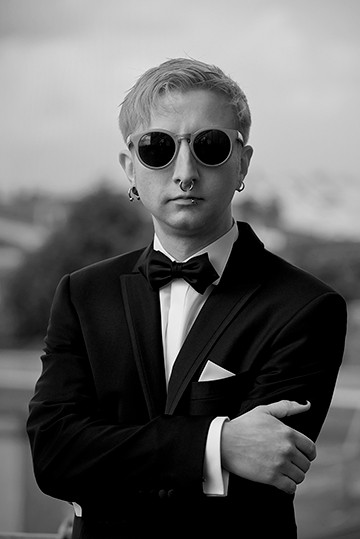Feb 03, 2016
Dandy of the Week: Klaus Nomi


Each week, Dandy Dicks will highlight a key figure in gay culture, be it past or present. These men are what we consider true Dandies, advancing our ideals of gay men everywhere and doing it with lasting influence and style. This week’s installment is on Klaus Nomi, an icon of early new wave who this week would have turned 72. He revolutionized the avant-garde for a new generation of club kids and was one of the first celebrities to draw attention to AIDS.
Though it’s been a full two weeks since news of his passing, the world is still collectively mourning for David Bowie. An untold number of rarities and oddities from the legend’s long career have surfaced on the internet in this grieving process, but one clip in particular has become ubiquitous across newsfeeds. It’s a performance Bowie gave to a fledgling Saturday Night Live in 1979, a performance that introduced the world to one of the strangest pop oddities yet seen: a performer known as Klaus Nomi.
Ascending to popularity right at the birth of new wave, Nomi was a perfect storm of the elements that both characterized and transcended the movement. His look was glamorous and high-fashion, yet so bizarrely unfamiliar that he could have been an alien. He worked within the world of the freshly birthed electronic music scene, but he infused the genre with his love of 18th century classical music. He has become one of the most influential figures in the worlds of music and nightlife, but his legacy remains one of the most unsung tragedies of the era.
Nomi was born Klaus Sperber in Bavaria in 1944. Music quickly formed a central role in his life as he developed a dual and lasting fondness for pop music and opera. “Elvis Presley is my spiritual father, and as you may know Maria Callas is my spiritual mother,” he said of his two loves. Like many Germans of artistic temperament, he moved to West Berlin in his early twenties, surrounding himself within the flourishing arts scene. He worked as an usher at the Deutsche Oper and began to hone his craft at gay discotheques around the city, performing arias from the old masters in his signature, haunting counter-tenor.

But Berlin was not enough for Nomi, and in 1972 he decided to pursue his dreams in New York. Though the city was arguably the center for Bohemian ideals and culture at the time, America wasn’t quite ready for something as indescribable as Nomi. He supported himself by working as a pastry chef, working his way through the East Village arts scene with his distinctive brand of performance art.
In classic New York fashion, things turned around quickly and dramatically. He caught the attention of Bowie, appeared on national television, and almost overnight found the attention for his art that he had craved his whole life. Bowie helped negotiate a record deal with RCA, and within two years had released his self-titled debut album.
Though he owed Bowie a great debt, including lifting the rock star’s plastic tuxedo attire as his own, Nomi’s work was like no one before or since. He synthesized covers of both opera and rock staples like Chubby Checker’s “The Twist” and had immediately iconic original material like his battlecry “The Nomi Song”. Nomi demonstrated a melting pot of culture that was unified by his possessed style of performance. Wide-eyed, karate-chopping, and painted white like a ghost, he looked like something out of a silent horror film. As he fabulously put it, “I’m from Planet Nomi where I wear black lipstick, so you can see my lips and what I am doing with them.”
By 1982 he had reached the apex of popularity amongst the New York art world, with his shows frequently attended by a who’s who of the era, from Keith Haring to Basquiat. But it’s also here that Nomi’s story begins its descent. He became infected with AIDS at a time when no one even knew what AIDS was. It was known only as the “gay cancer”, and it began to consume Nomi faster than anyone could anticipate. For his final stage performance, of British composer Purcell’s “The Cold Song”, he was attired in long sleeves and a neck ruffle to hide the lesions that now covered his frail body. And just as quickly as he appeared, Nomi vanished, succumbing to his disease at the age of 39.
As sobering as it is, part of Nomi’s legacy is his demise. He is often regarded as one of the first celebrities (as niche as he was) to fall victim to AIDS. Many would come after him, but his death was the point at which the New York art scene began to take notice of the plague that would soon begin to ravage them. And just like the many who fell after him, Nomi died alone, abandoned by his community out of fear of the unknown.
But towering in the face of death is his artistic legacy. Even by today’s gaudy standards, Nomi and his aesthetic are out there. It took massive cojones to create his flamboyantly strange world, but his singular vision was so precisely in tune with the culture of the time that it shifted its course altogether. New wave as we know it would not exist had so many artists not shamelessly pilfered Nomi’s dramatic look, disaffected style of presentation and playful composition.
And even beyond new wave, Nomi continues to weave his way into contemporary culture. His meteoric rise and fall in counterculture was beautifully traced in the 2004 documentary The Nomi Song, named of course for his indelible pop mantra. Fittingly, it premiered at the Berlin International Film Festival and received near unanimous critical acclaim. He has inspired runway collections from fashion houses like Givenchy and Jean-Paul Gaultier, pop star looks from the likes of Lady Gaga and countless parodies of 1980s culture. This is possible not so much from his body of work itself, a sadly limited output, but from the fearlessness of his vision. Any old queen can put on black lipstick, but only a truly special talent can put on black lipstick, sing opera, and use a taunt of ‘alien freak’ as a coronation.

Images: Monsieur Vintage, Brightest Young Things, Poetry Foundation
by Jake Boyer







